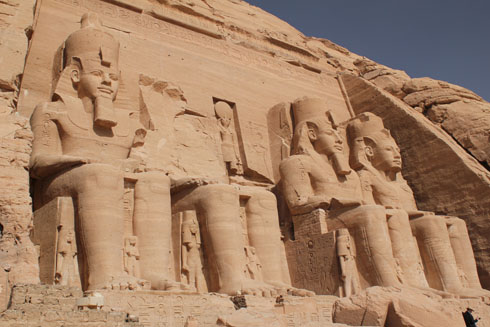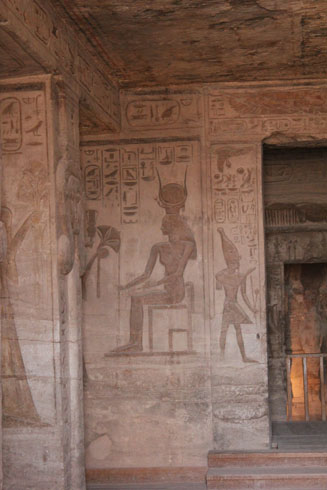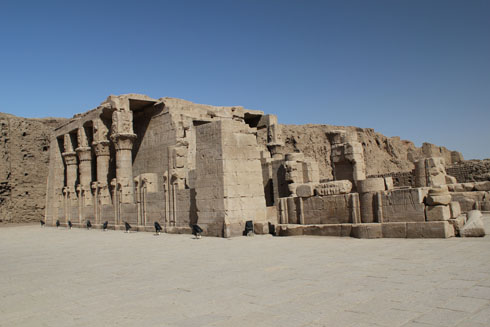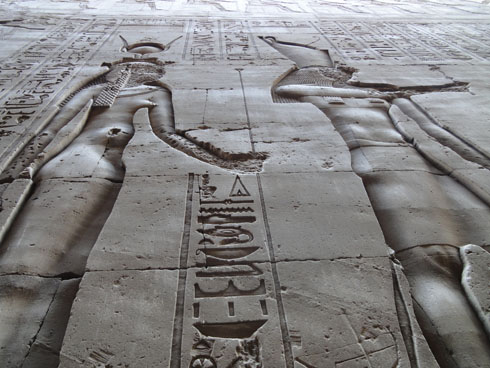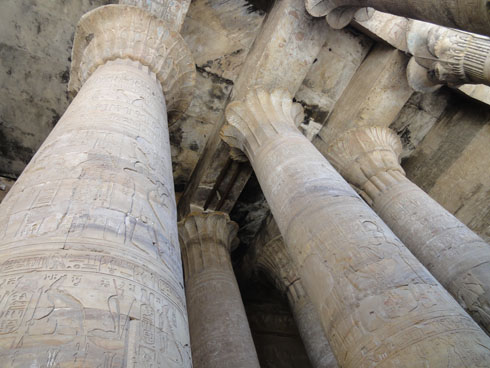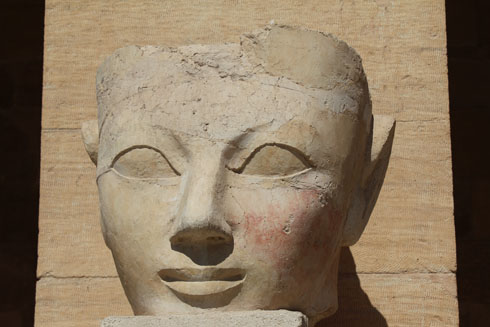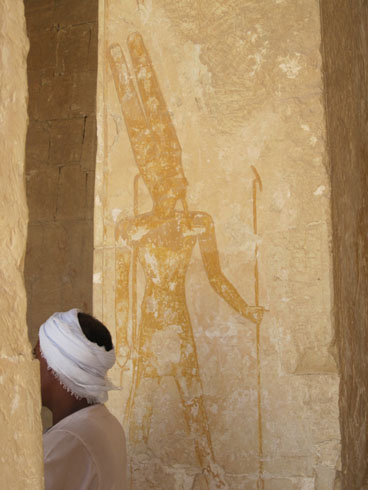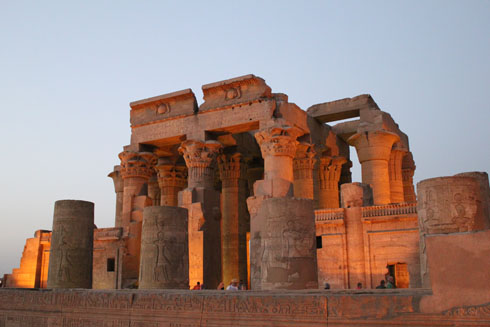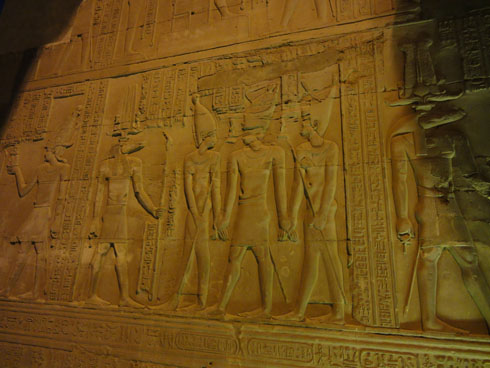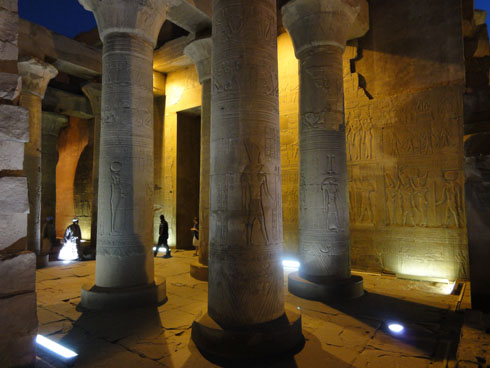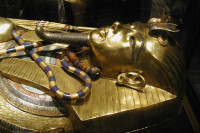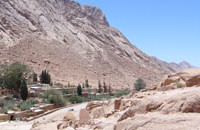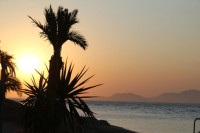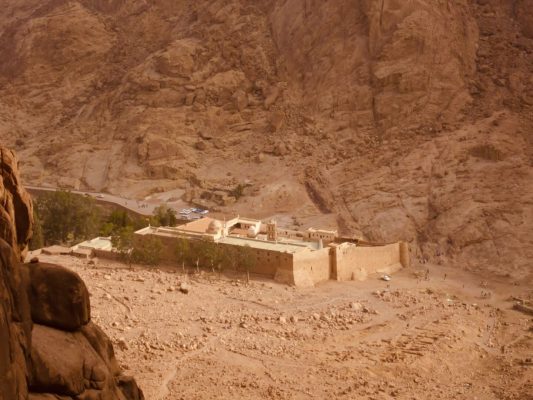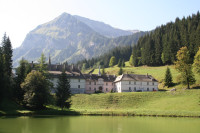Travel
The most well-known temples on the Nile river: from Abu Simbel to Kom Ombo
On the Nile river in Egypt you can find many temples. They were built by the Ancient Egyptians to honour their hundreds of Gods. Some are more in ruins than others while some are better to be seen at night, with all the lights shining on the columns and hieroglyphics. The smaller temples and the less touristy ones are sometimes the nicest!
Most people visit them during a stay in Luxor or during a Nile cruise. So each morning around 7:00 a.m. you leave the boat or your hotel to sight-see the temples. Sometimes you arrive just before sunset for a late night visit. It becomes then really magical. Most visits are coordinated so that the people can appreciate them better when the sun is not too hot.
Don’t be too disappointed if you can’t see everything. There are so many things to see, you will need months to see it all!
Learn more about the most well known temples on the Nile river:
Abu Simbel (1274 B.C. to 1244 B.C)
I remained speechless when I first saw Ramesses II’s temple from a distance. My aunt was right, Abu Simbel was “the crowning” of our trip to Egypt. We even got to hold the keys of Nefertari’s temple. It is hard to believe that the Abu Simbel temples were once located somewhere else!
Ramesses’ temple, the Great Temple, was moved from its original place on lake Nasser 210 meters away. More than 1000 stones had to be cut and put back together, over 40 years ago to prevent the man-made lake inundating the temples. It took about 4 years of hard work!
The two temples are now on top of a made up mountain; when inside you really feel like being in a cave. From the outside you see 4 colossi of Ramesses, which are 65 feet (20 meter) high each. One was damaged in an earthquake and it is left the way it was since. It was built to honour the Gods of Re-Horakhty, Ptah and Amun.
Inside there are four statues, three of which get sunlight only 2 days a year on 21 of October and on 21st of February. When entering through the Hypostyle Hall, you can’t stop looking at the alley of 8 statues of Ramesses.
Hidden in the sand, Ramesses’ temple was first found in the 1810’s by a Swiss, Jean-Louis Burckhardt (he discovered the site of Petra). It was rediscovered again a few years later by the Italian explorer, Battista Belzoni.
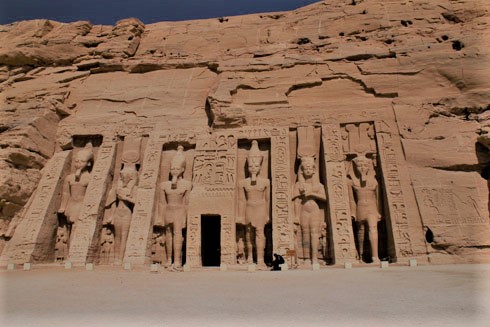
The smaller temple in Abu Simbel: King wife temple
The other temple (smaller one) next to Ramesses is the king’s wife temple, made to honour goddess Hathor. It was actually the first temple built by Ramesses, but with the second one, he achieved perfection.
Nefertari was one of the many wives of Ramesses. She is known to have been really beautiful. One can see her tomb in the Valley of the Queens in tomb 66.
Edfu temple (237 B.C – 57 B.C)
We arrived at the Edfu temple by horse chariot. It was a great 10 minute-ride through the busy town of Edfu, allowing us to see the Egyptian way of life.
After a short walk through the shady bazaar, passing by numerous Egyptian souvenir salesmen, we finally saw the large site of Edfu. It is the second largest temple after Karnak.
It was built starting with Ptolemy III in 237 B.C. and ended around 57 B.C. Luckily in the 1790’s a French explorer discovered it. It was only almost a century later in 1860 that it was dug out from the sand by the Egyptologist, Auguste Marquette.
When you first arrive you will see an enormous statue of the God Horus, with a falcon head. Edfu temples honours as well the gods of Hathor and Harsomtus.
I remained stunned looking at the height of the fortification wall and first pylon! The façade shows a relief sculpture of a pharaoh holding his enemies by the hair in one hand.
It has numerous well preserved bas reliefs, an Hypostyle Hall with high columns of different designs, chapels, chambers, an offering hall and a sanctuary barge with Goddess Hathor at the centre of the temple. If you get a chance, check out the Nilometer outside of the temple.
Hatschepsut (2050 B.C. to 1458 B.C.)
Even if you have never been to Luxor, you may have seen a reportage on Hatschepsut’s temple or have flipped through a guidebook. What you will remember I am sure is the way it was designed. It lays on a limestone cliff on 3 terraces. It is called Temple of Deir al Bahari, taking the name of a Coptic monastery, it was once. Deir al Bahari means “Northern Monastery”.
Behind Hatschepsut´s temple lays the valley of the kings. It used to be 3 temples but today one temple is almost completely gone. The Temple of Hatschepsut was built during the 18th dynasty for Queen Hatschepsut. She was an extremely powerful woman and ruler and reigned for about 21 years. I loved this magical place especially the face of Hatschepsut in the entrance.
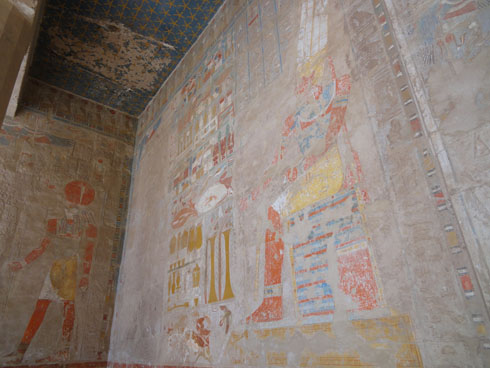 Hatschepsut: temple keeper near a well preserved wall
Hatschepsut: temple keeper near a well preserved wall
Your guide won’t be allowed to go with you during the entire visit. He will leave you after having explained what you will see. An Egyptian guard or temple keeper may try talking to you. They will gladly show you where no one else is allowed to go, but they do expect a tip!
Kom Ombo (180 B.C to 14 A.D.)
Just like the Luxor Temple, I visited Kom Ombo’s temples at night time. It was the last site before arriving in Assuan, 30 miles (48 km) away. Our boat arrived at the dock just before sunset. The view was breathtaking.
The site is Greco-Roman built from around 180 B.C to Ptolemy XIII (51-47 B.C). In Greek, the term Kom Ombo means “gold mountain”.
The place is quite small compared to Karnak or Edfu. As all the river boats follow the same schedule, it can be quite crowded with tourists.
Kom Ombo has actually 2 temples, one honouring the God of Horus and one the God of Sobek. Sobek had a crocodile head. As for Horus, it had a falcon head. The enemy of Horus was Seth and in a legend they fought against each other, with no winner.
When you exit the temple, you will see a crocodile museum, with mummified crocodiles. Like other temples in Egypt it was buried under some sand for centuries until the French Egyptologist, Jacques Jean-Marie de Morgan, discovered it in 1893. Unfortunately it has been damaged by earthquakes and the Nile river flooding.
Our guide pointed out the best in the temple and showed us the most important halls and rooms. Something interesting was the hieroglyphics showing the medical instruments and carvings picturing a birth chair, an Egyptian invention. Next to the birth chair, one can see a French recipe for curing diarrhoea in hieroglyphics.
I won’t forget the last sight I had of Kom Ombo while leaving, looking up at the deep dark blue sky through the lit up columns!
The guard keepers really work in some of the most amazing places in the world!
This article is based on my experience of visiting Egyptian temples during a Nile cruise.

